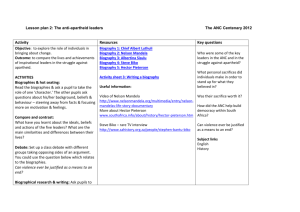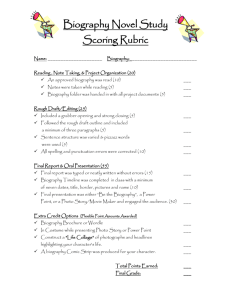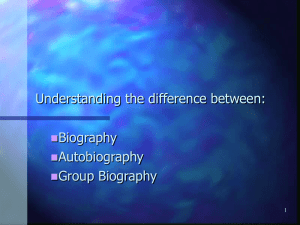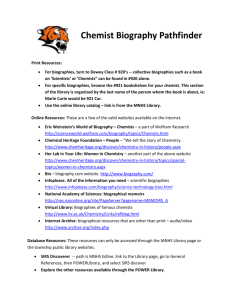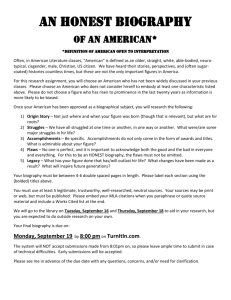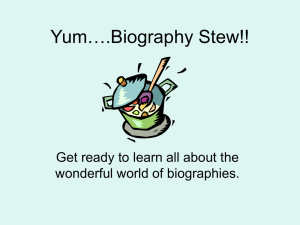CULTURAL_BIOGRAPHY_OF_AN_OBJECT
advertisement
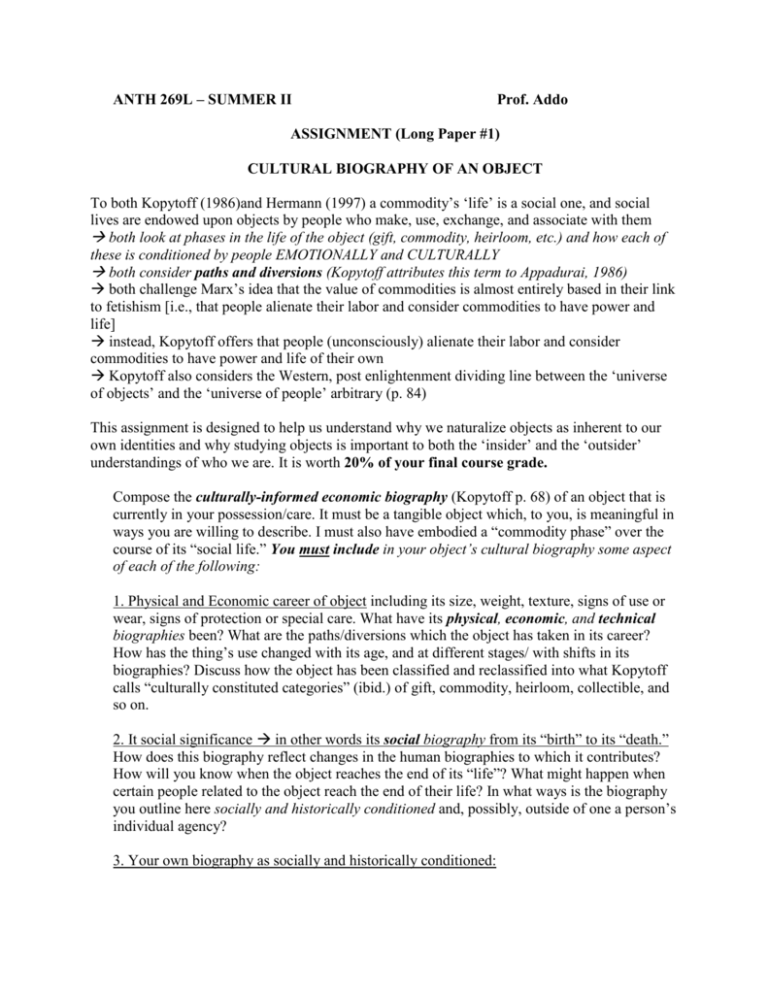
ANTH 269L – SUMMER II Prof. Addo ASSIGNMENT (Long Paper #1) CULTURAL BIOGRAPHY OF AN OBJECT To both Kopytoff (1986)and Hermann (1997) a commodity’s ‘life’ is a social one, and social lives are endowed upon objects by people who make, use, exchange, and associate with them both look at phases in the life of the object (gift, commodity, heirloom, etc.) and how each of these is conditioned by people EMOTIONALLY and CULTURALLY both consider paths and diversions (Kopytoff attributes this term to Appadurai, 1986) both challenge Marx’s idea that the value of commodities is almost entirely based in their link to fetishism [i.e., that people alienate their labor and consider commodities to have power and life] instead, Kopytoff offers that people (unconsciously) alienate their labor and consider commodities to have power and life of their own Kopytoff also considers the Western, post enlightenment dividing line between the ‘universe of objects’ and the ‘universe of people’ arbitrary (p. 84) This assignment is designed to help us understand why we naturalize objects as inherent to our own identities and why studying objects is important to both the ‘insider’ and the ‘outsider’ understandings of who we are. It is worth 20% of your final course grade. Compose the culturally-informed economic biography (Kopytoff p. 68) of an object that is currently in your possession/care. It must be a tangible object which, to you, is meaningful in ways you are willing to describe. I must also have embodied a “commodity phase” over the course of its “social life.” You must include in your object’s cultural biography some aspect of each of the following: 1. Physical and Economic career of object including its size, weight, texture, signs of use or wear, signs of protection or special care. What have its physical, economic, and technical biographies been? What are the paths/diversions which the object has taken in its career? How has the thing’s use changed with its age, and at different stages/ with shifts in its biographies? Discuss how the object has been classified and reclassified into what Kopytoff calls “culturally constituted categories” (ibid.) of gift, commodity, heirloom, collectible, and so on. 2. It social significance in other words its social biography from its “birth” to its “death.” How does this biography reflect changes in the human biographies to which it contributes? How will you know when the object reaches the end of its “life”? What might happen when certain people related to the object reach the end of their life? In what ways is the biography you outline here socially and historically conditioned and, possibly, outside of one a person’s individual agency? 3. Your own biography as socially and historically conditioned: Finally, re-read the final paragraph on page 66 through to page 68, up to where Kopytoff states that “what would make a biography cultural is not what it deals with, but how and from what perspective.” You should consider: are any specific cultural biases -- your own or others’-- inherent in the cultural biography of your object? What assumptions applied in your particular exploration reflect the following idea from Kopytoff: “the West is also a unique cultural entity with a historically conditioned set of predispositions to see the world in certain ways” (p.84)? How do you justify these assumptions? Do you employ any assumptions in your exploration that are ‘other’ to Western approaches, and how do you justify them? PAPER SHOULD BE: 4-5 double-spaced pages, stapled, name on each page; due IN HARD COPY at the start of class TUES AUGUST 2, 2011.


